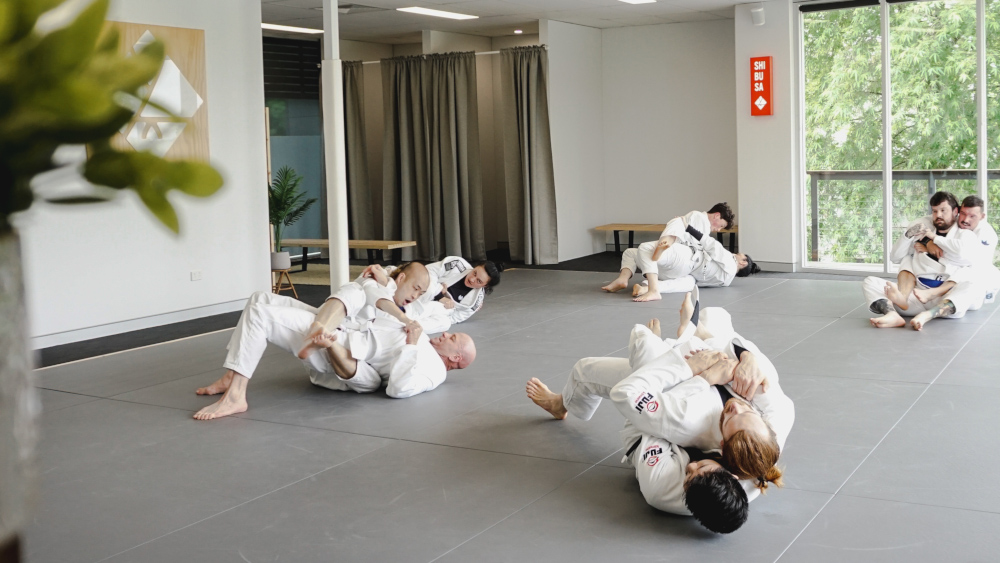The Definitive Guide To Starting Your Jiu Jitsu Training
INTRODUCTION
Most people think they could handle themselves in a fight.
Then they step onto the mats... and realise they know nothing.
Jiu Jitsu is humbling like that.
It teaches you that size and strength don’t matter nearly as much as technique, timing, and patience.
That’s what made it explode after UFC 1—watching Royce Gracie make giants look helpless.
Since then, jiu jitsu has become one of the most practiced martial arts in the world. But more than that, it’s a community. A place where everyone is learning together.
If you’re reading this, you’re probably thinking about training. This guide will show you everything you need to know before stepping on the mats for the first time.
WHY EVEN CONSIDER TRYING JIU JITSU?
Every great story has a hero. And every hero needs a guide.
You’re the hero in this journey. Jiu jitsu is the guide that will teach you how to become stronger, more resilient, and more confident.
Here’s what’s waiting for you:
You’ll learn to protect yourself. Jiu jitsu gives you real-world self-defence skills.
It’s one of the most fun ways to get in shape. Forget boring workouts—jiu jitsu makes fitness exciting.
It sharpens your mind. Every roll is a problem to solve.
It builds a strong community. The people you train with will become like family.
It challenges you. But overcoming challenges is what makes life meaningful.
You don’t have to be in shape. You don’t have to be young. You just have to start.

IS IT EASY TO TRY JIU JITSU?
Absolutely. The hardest part is walking through the door.
Once you do, everything else falls into place. Jiu Jitsu schools everywhere offer free trials so you can see what it’s all about.
At Shibusa Jiu Jitsu Studio, we offer a no-obligation, complimentary 1-to-1 private lesson to help you get started. Think of it as your first step into an incredible journey.
DO I NEED A UNIFORM TO START?
Nope! Just show up in comfortable gym clothes.
Traditionally, jiu jitsu is practiced in a gi (a martial arts uniform), but for your first class, no special gear is needed.
At Shibusa, we’ll get you started with whatever you have. And if you decide to stick around, we have uniforms available at the studio.

BELTS RANKINGS IN JIU JITSU
Every hero starts as a beginner. In jiu jitsu, that means white belt.
From there, the journey continues through blue, purple, brown, and finally, black belt.
It takes time—anywhere from 8-12 years—but the journey itself is what matters. Promotions aren’t just about showing up; they’re about improving, problem-solving, and becoming better every day.
And remember: if a school charges for belt promotions, run the other way. Your progress should be earned, not bought.
WHAT SHOULD I BRING WITH ME ON MY FIRST DAY?
Comfortable workout clothes (if you don’t have a gi yet)
Water bottle (hydration is key)
An open mind (non-negotiable)

WHAT HAPPENS AT MY FIRST LESSON?
At Shibusa, we make sure your first lesson is stress-free. Here’s what you can expect:
A warm welcome. You’ll be greeted at the front and shown around the studio.
A quick form & waiver. Just some basic details before stepping onto the mats.
Your private lesson begins. We introduce you to jiu jitsu, teach a few techniques, and prepare you for regular classes.
WHAT ARE THE COACHES LIKE?
A great guide makes all the difference.
Look for an instructor who is knowledgeable, patient, and genuinely cares about your progress. A black belt alone doesn’t make someone a great teacher.
At Shibusa, our instructors are not just experienced—they’re dedicated to helping you succeed.

WILL I HAVE TO SPAR ON MY FIRST DAY?
Nope. Every great journey starts with a first step—not a fight.
At Shibusa, we ease you in with structured drills and gradually over months begin controlled sparring. No pressure, no surprises. Just learning at your own pace.
HOW OFTEN SHOULD I TRAIN?
That depends on your goals. But here’s a simple rule:
2x per week → Steady improvement
3-4x per week → Faster progress
5-6x per week → Jiu jitsu becomes second nature
Consistency beats intensity. It’s not about going hard for a month—it’s about showing up week after week.
HOW DO I STAY SAFE ON THE MATS?
Safety starts with awareness.
Tap early, tap often. There’s no shame in tapping—it’s how you learn and avoid injuries.
Train with control. Jiu jitsu is a marathon, not a sprint. Wild movements lead to accidents.
Listen to your body. Rest when you need to. Injuries happen when you push too hard.

READY TO TRY JIU JITSU?
If you’re in Canberra, we’d love to have you at Shibusa Jiu Jitsu Studio.
... AND AFTER READING THIS, EXCITED TO TRY OUT JIU JITSU!
Contact Us Now To Claim Your FREE INTRO LESSON!
